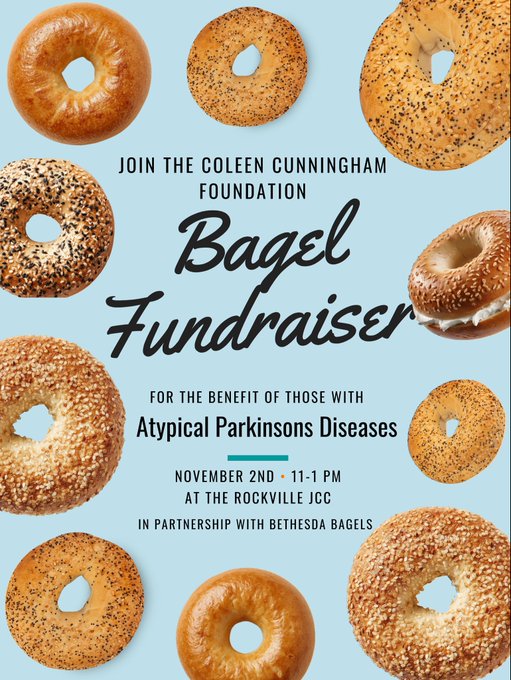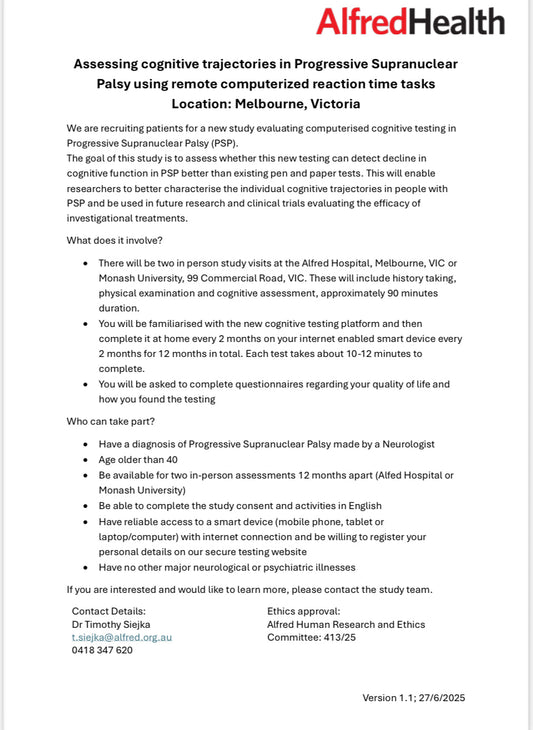It has been said there are four stages, but because there is so little research they are a guideline only.
Many people experience some stage four symptoms at stage one or overlap stages. Some never experience certain symptoms and then others can experience ones not listed. The impact it has on each individual varies dramatically.
Progressive Supranuclear Palsy (PSP) is a rare neurodegenerative disorder that affects movement, balance, vision, speech, and cognitive function. The disease progresses slowly over time, and its symptoms typically become more severe as the disease advances. While not everyone with PSP experiences the same symptoms or progression, there are generally four recognized stages of PSP:
-
Early stage: In the early stage of PSP, individuals may experience symptoms such as difficulty with balance and coordination, changes in gait, and problems with eye movement. These symptoms may be subtle and easily dismissed as normal aging or a different condition.
-
Mid-stage: In the mid-stage of PSP, symptoms become more pronounced and can include falls, speech and swallowing difficulties, and cognitive impairment such as problems with memory and executive function. Depression and apathy are also common.
-
Advanced stage: In the advanced stage of PSP, individuals may become wheelchair-bound and require assistance with daily activities such as eating, dressing, and bathing. Symptoms such as rigidity, spasticity, and involuntary movements become more severe.
-
End-of-life stage: In the end-of-life stage of PSP, individuals may be bedridden and require around-the-clock care. They may have difficulty swallowing, become more susceptible to infections, and experience other complications related to the progression of the disease.
It's important to note that not everyone with PSP will experience all of these stages, and the progression of the disease can vary widely from person to person. Additionally, some individuals may experience rapid progression, while others may experience a slower course of the disease.
Here is the four stages below in more detail;
Early stage:
May present via the fracture clinic, falls services, eye specialist or speech and language therapist. The early stage typically spans years 0-1.
> Ambulant.
> Occasional falls.
> Unsteadiness and poor balance.
> Possible visual problems affecting ability to read.
> Voice changes, for example reduced volume.
> Mood changes.
> Reduced socializing.
> Changes in mood and behavior, including apathy and anxiety.
Mid stage:
Many people reach this stage before diagnosis. Consider discussing advance care planning and advance decisions to refuse treatment. Consider referral to palliative care services. The mid stage typically spans years 2-3.
> Ambulant with aids.
> High risk of falls and injury.
> Visual problems affecting self-care abilities, for example eating and walking as unable to move eyes to see.
> Speech increasingly unintelligible.
> Inability to initiate conversation.
> Impulsivity (risky or impulsive behavior).
> Apathy.
> Dysphagia.
> High level of supervision required.
> Increasingly socially withdrawn.
Advanced stage:
Patients should be on GP palliative care register and have access to specialist palliative care.
The advanced stage typically spans years 3-6.
> Mobility significantly compromised, probably chair bound requiring a wheelchair for mobility.
> Significant visual problems.
> Significant muscle stiffness.
> Significant communication problems, but probably still able to understand.
> High risk of aspiration and pneumonia as a result of dysphagia.
> Pain.
> Increasing periods of sleepiness.
> Incontinence.
> Severely withdrawn socially.
> Dependent for most or all aspects of care.
End of life stage:
This stage is difficult to detect, but may be indicated by reduced levels of consciousness, inability to eat or drink, acute infection, a fall or major fracture, and rapid and significant weight loss. The end of life stage typically spans 6-8 weeks.
> Severe impairments and disabilities.
> Rapid and marked deterioration in condition.
> Decisions with regard to treatment interventions may be required, considering an individual’s previously expressed wishes (advance decisions to refuse treatment).
Discover the Benefits of Vielight Red Light Therapy for Atypical Parkinsonism


 Donate
Donate




131 comments
I originally wrote a comment on June 14, marking the realization that my father was finally and firmly entering stage 4. As it turned out, he passed the very next day. He was at home and was just undergoing hospice care, which even as a physician he resisted up until the end. I actually administered the first of the pain medication and, knowing all too well that he was in need and in the final moments, he thanked me. This is just a terrible disease, as far too many families know. I wanted to circle back to share something quite remarkable that we noticed. About three hours before he took his last protracted breath, my father’s limbs which had been locked into the most horrible and painful contortions, finally and dramatically released. His arms and legs went straight for the first time in year. It really was stunning and, in a way, I knew my father, at least in his conscious form, was likely gone in that moment, and that the disease, in whichever portion of the brain it resided, finally let him go. I miss my father terribly. He actually diagnosed himself several years before any of the neurologists agreed that what he had was PSP. Bless all whose doorstep is darkened with this affliction.
My wife was diagnosed with Parkinsons over 12 years ago, all she had was shuffling feet, she had had 2 strokes in 1995 but recovered brilliantly with no after effects apart from her sight awareness to each side was slightly limited. When she was diagnosed with “Parkinsons” because of the lack of symptoms we had a second opinion who said it was Parkinsonism with no further information, so she has been treated as a normal Parkinson patient with “Modapar” a Dopamine trade name but never had any noticeable affect. She has no tremors at all. She is still being treated as a Parkinson patient but has all the symptoms of PSP but no one will tell us what it. She has slowly deteriorated over the last two years and now can hardly walk, can’t feed herself, or read or write, and sleeps nearly all day and night and although she is aware of every thing and everybody she is slowly losing that ability rapidly, the only diagnosis is “Vascular Parkinsonism” but she is showing all the signs of PSP no one has mentioned it yet.
An excellent PSP support board can be found at smartpatients.com. Then joint the board for Progressive Supranuclear Palsy. It is a USA based support group with people from all over the country caring for loved ones with PSP and CBD. So much shared information there.
Wondering if anyone here was without a diagnosis for a period of time and sought out functional medicine that lead to this diagnosis? If so how long did that take?
If you were diagnosed by another type of Dr. .. what kind?
Wondering if anyone here was without a diagnosis for a period of time and sought out functional medicine that lead to this diagnosis? If so how long did that take?
If you were diagnosed by another type of Dr. .. what kind?